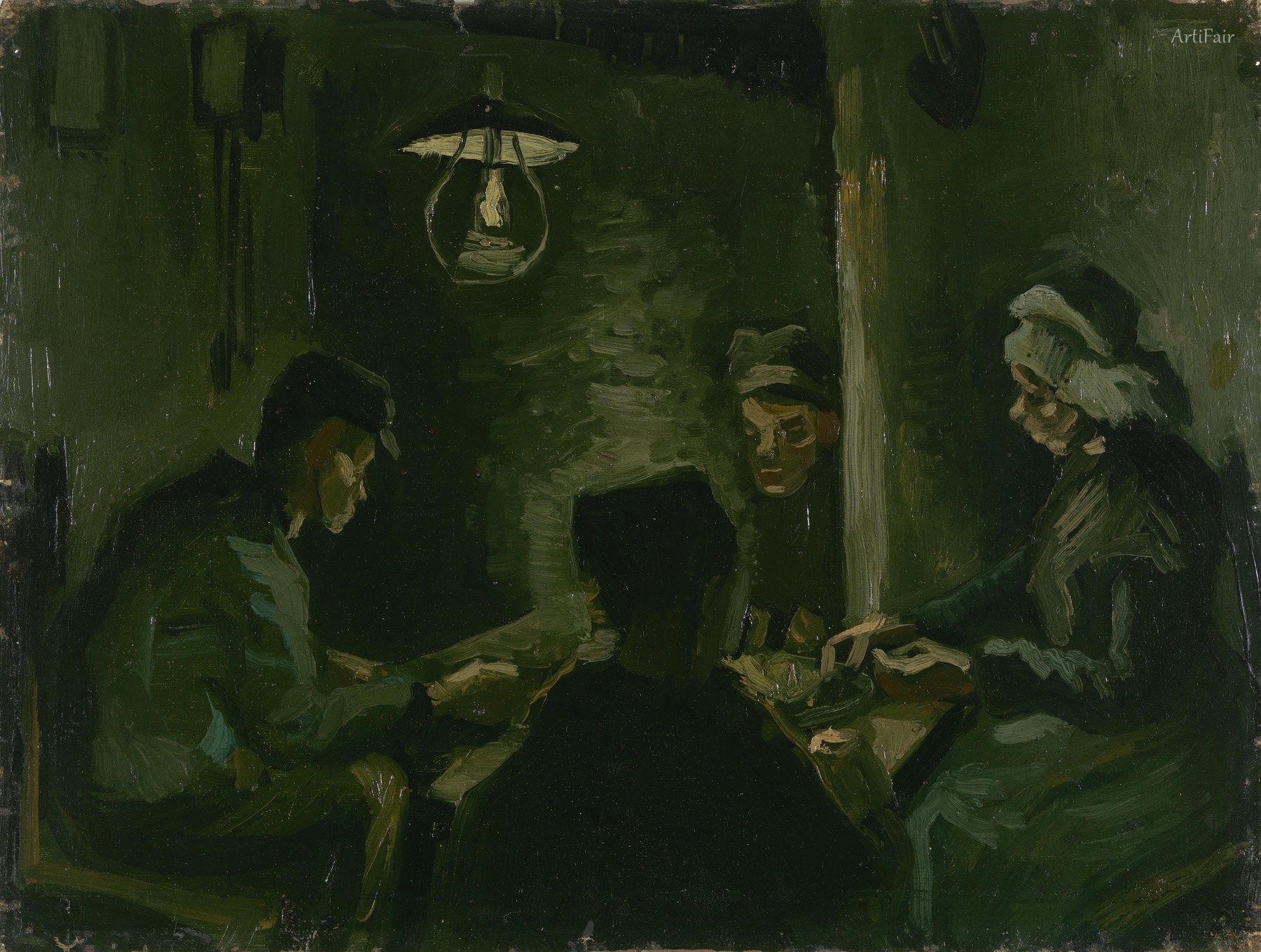
Art Appreciation
In this haunting study, a dimly lit interior encapsulates an intimate yet somber moment—a family gathered around the table, sharing a meal of potatoes, which speaks to their humble existence. Shadows dance on the walls, illuminated only by the soft, flickering light of an overhead lamp that casts an almost ethereal glow on their faces. The figures, rendered with broad, expressive brushstrokes, are primarily cloaked in dark hues, which convey a sense of poverty and toil. Each person appears to be distanced emotionally yet physically close, emphasizing the hardships etched into their features; one can almost hear their hushed murmurs as they navigate their stalwart existence together.
Van Gogh employs an earthy palette dominated by greens and browns, suggesting both the simplicity of their meal and the stark reality of their lives. The color scheme evokes a melancholic yet grounding atmosphere, allowing viewers to feel the weight of their labor, while the dramatic contrasts draw attention to the expressions of the figures—each face a canvas of resilience and struggle. This artwork is not merely a representation of rural life but an empathetic portrayal of the human condition, encapsulating Van Gogh's desire to highlight the silent narratives of everyday existence. It's a poignant reminder that beauty often arises from the most unassuming circumstances, compelling one to reflect deeply on the connectivity of human experiences through times of hardship.